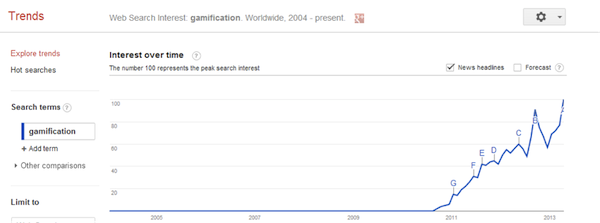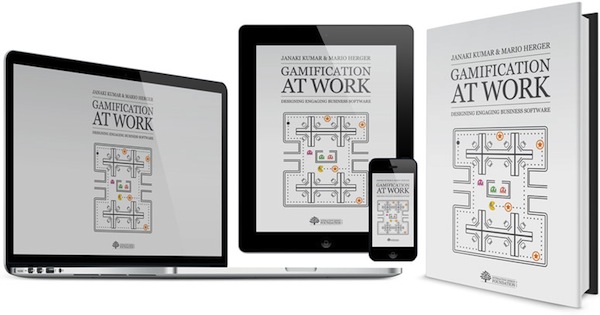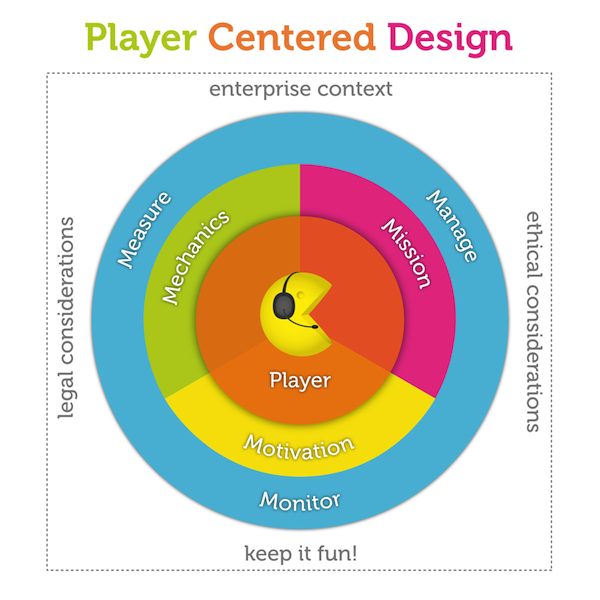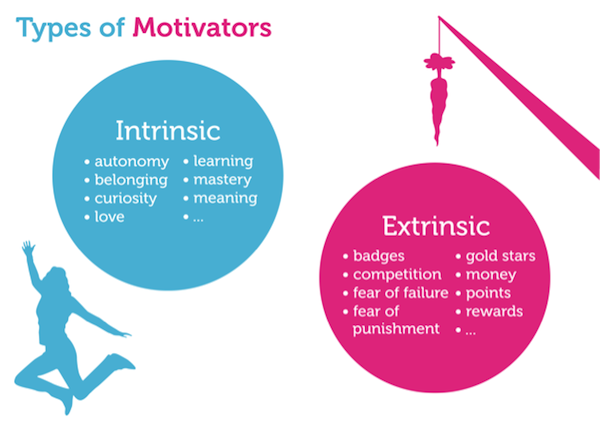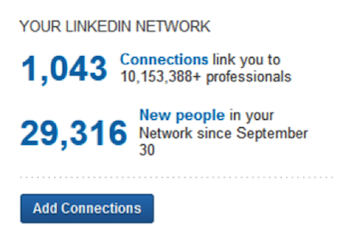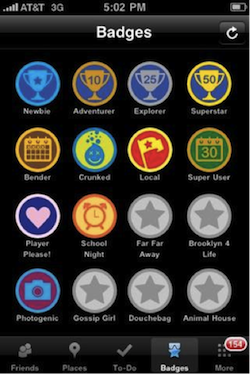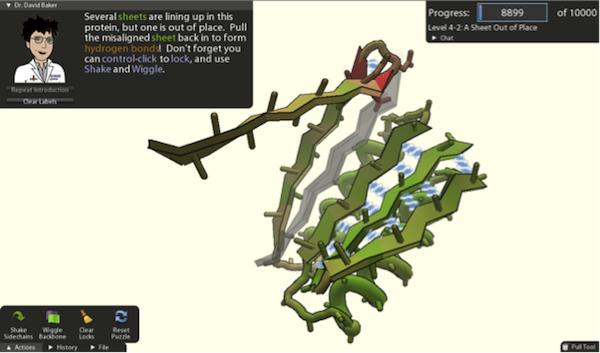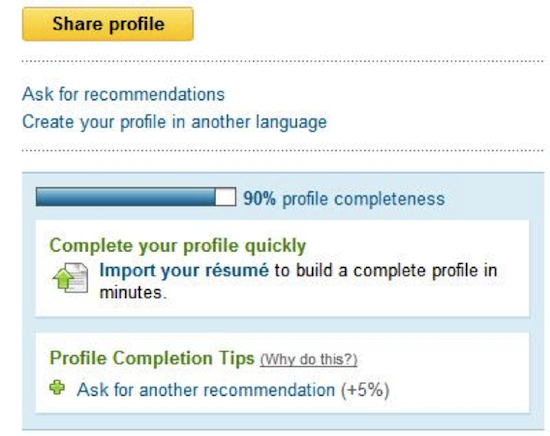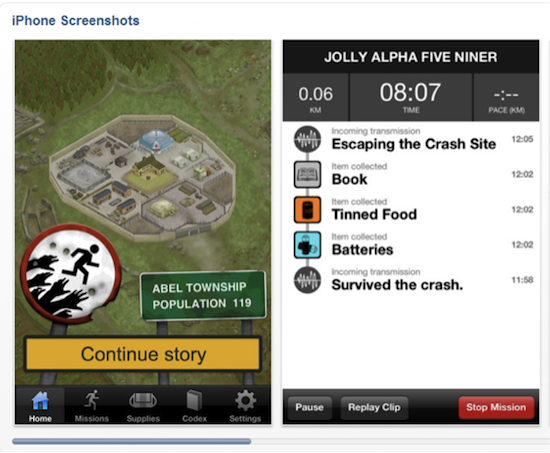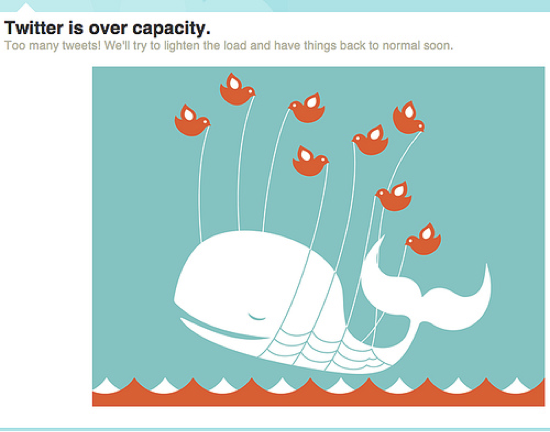Gamification is a hot new trend in business. As with any emerging trend, the best practices are still emerging.
Some businesses are taking a “chocolate covered broccoli” approach by simply adding points, badges, and leaderboards to their applications and calling them gamified. This article offers another approach.
It outlines a road map to meaningful gamification via a five-step process called Player Centered Design. It is a practical guide for designers, product managers and developers interested in incorporating the principles of gamification into their business software.
What is Gamification
Gamification is the application of game design principles to non-game environments. It is not about designing games, but learning from them and applying the insights into other areas. Gamification motivates players to engage in desired behaviors by showing them the path to mastery. It attempts to make technology and business more inviting by taking advantage of people’s innate enjoyment of play.
The Buzz around Gamification
Type “gamification” into Google Trends and you will see the term started piquing our collective interest in 2011 and has steadily trended upwards since.
There have been several articles about Gamification in popular business journals. (To name a couple: Forbes ran an article titled “Gamification Gets Down to Business” in Sept 2011, and The Wall Street Journal’s article “Latest Game Theory: Mixing Work and Play” was in an October 2011 issue.)
“…by 2014, 80% of current gamified applications will fail to meet business objectives…”
In November 2012, Gartner published a report on Gamification expressing both positive and negative predictions with regards to gamification. The positive prediction was that “by 2015, 40% of Global 1000 organizations will use gamification as the primary mechanism to transform business operations.” The negative prediction was that “by 2014, 80% of current gamified applications will fail to meet business objectives, primarily due to poor design.” So how do we avoid being part of the 80%?
Player Centered Design
In a new book I co-authored with Mario Herger called Gamification at Work: Designing Engaging Business Software, published by Interaction Design Foundation, we recommend a five-step process we call “player centered design.”
Player centered design is based on a well-established design methodology called User-Centered Design (UCD), but goes beyond UCD to enable meaningful engagement and behavior change. In the book, we provide details, examples, and insights from projects to guide you on your journey to design gamification that works. Below, we’ve summarized some of the key points in the book.
Step 1: Know Your Player
The first step in the player centered design approach is to understand the player and their context. The success of your gamification efforts depends on this clear understanding. Is your player a sales representative, a financial controller, an employee, a supplier, or a customer? Identify them and understand as much as you can about them.
Step 2: Identify Your Mission
The next step is to define the mission. This step involves understanding the current business scenario (what players are doing today), identifying the desired or target business outcome (what management wants to achieve), and setting an appropriate mission for your gamification project. For example, if agents in a call center are not familiar with features of the product causing low customer satisfaction ratings, the mission of the gamification system could be to motivate agents to take advantage of product training and share knowledge with one another.
Step 3: Understand human motivation
“Gamification is 75% Psychology and 25% Technology.”–Gabe Zichermann
There are two general types of motivations: intrinsic and extrinsic. Intrinsic refers to internal motivations such as autonomy, mastery, and meaning. Extrinsic refers to external motivational techniques such as money, trophies, etc.
There are a number of theories of human motivation. We recommend you familiarize yourself with research on motivation in order to create effective gamification systems. Here are a few links for your inspiration:
- Self Determination Theory is a broad framework to study human motivation and personality
- Dan Pink’s Drive presents provocative research on motivation in the work place
- Stanford University professor BJ Fogg’s research on Behavior Design
- Nicole Lazzaro’s research on Four Keys to Fun
Step 4: Apply Mechanics
Armed with a clear understanding of the player, the mission, and the theory behind human motivation, it’s time to apply game mechanics, create game rules, and form a core engagement loop for your gamification project. Game mechanics refer to the UI elements player interacts with. Here is a list of game mechanics that are relevant to enterprise software.
Points
Points are the granular units of measurement in gamification. They are single count metrics. This is the way the system keeps count of the player’s actions pertaining to the targeted behaviors in the overall gamification strategy. For example, FourSquare counts each check in, and LinkedIn counts each connection.
Badges
Once the player has accumulated a certain number of points, they may be awarded badges. Badges are a form of virtual achievement by the player. They provide positive reinforcement for the targeted behavior.
Leaderboards
Leaderboards bring in the social aspect of points and badges, by displaying the players on a list typically ranked in descending order with the greatest number of points at the top. It creates a sense of competition among the players.
Relationships
Relationships are game mechanics based on the motivational driver of connection. We are social beings, and relationships have a strong effect on how we feel and what we do.
Challenge (with epic meaning)
Challenge is a powerful game mechanic to motivate people to action, especially if they believe they are working to achieve something great, something awe-inspiring, and something bigger than themselves.
Scientists at the University of Washington did just that. For over a decade, a team of highly qualified scientists worked on a technique called protein folding as part of a research effort to understand, prevent, and treat diseases like HIV/AIDS, cancer, and Alzheimer’s. They had not made as much progress as they wanted to, and decided to try incorporating gamification.
They created a puzzle that allowed gamers to fold proteins called Foldit and invited the public to play the game online. 47,000 people volunteered for this challenge and solved the problem in 10 days! If presenting the challenge in the form of a well-designed game could unleash the power of creative problem solving by volunteers towards scientific research, imagine what this technique could do for your organization!
Constraints (with Urgent Optimism)
It has been shown that constraints such as deadlines, when combined with urgent optimism, motivate people to action. Urgent Optimism refers to extreme self-motivation. It is the desire to act immediately to tackle an obstacle combined with the belief that we have a reasonable hope of success.
Gilt, a fashion e-commerce site, constrains the time allowed for their customers to bid on items to motivate them to action. Players are motivated by achievement when they are faced with these constraints and are driven to overcome them.
Journey
The journey game mechanic recognizes that the player is on a personal journey and incorporates this element into the experience. Three examples of implementations of this game mechanic are:
- Onboarding: a new player needs to be on boarded since they are just starting the journey. Offering help, and a brief introduction to the features and functions motivate the player to embark on the journey.
- Scaffolding: a way to prevent the on-boarded but inexperienced from making errors by giving them a sense of positive accomplishment. An example of scaffolding is the product progressively disclosing more features as the player gains more experience using the product.
- Progress: refers to providing feedback to the user on where they are in the journey, and encouraging them to take the next step.
Narrative
The narrative game mechanic draws the player into a story within the game. Zombie Run, a fitness game, uses narrative to make the players believe that zombies are after them, and they need to run as fast as they can to get away. The object of the game is to motivate the players to get fit without making it explicit.
Emotion
In many ways, emotional design is a large category in and of itself. In the context of gamification, we are not attempting to cover the topic as a whole. Rather, we want to draw inspiration from it, to enrich our gamification designs. Aesthetic elements like high quality artwork and content like humorous microcopy have the power to set a playful tone and engage the player on an emotional level.
Game rules
Once you have decided what mechanics to use, the next step is to define the game. If you are designing a system to motivate call center employees to undergo training, and you decide to use points in your game economy, you will need to determine how many points you award for the action.
If the employee only took 50% of the training, do they receive all the points, none of the points or 50% of the points? The rules of the game pull together the mechanics into a flow to motivate the player to achieve the mission.
Engagement loop
The core engagement loop refers to game mechanics combined with positive reinforcement and feedback loops that keeps the player engaged in the game. Frequent invitation to interact with the system creates positive reinforcement and the player will be motivated to stay engaged.
Step 5: Manage, Monitor, and Measure
Gamification is a program and not a project. Therefore, it is important to start small, closely monitor progress, and adjust as needed. The mission needs to be managed, the motivation needs to be monitored, and mechanics need to be measured continuously.
Other considerations in the enterprise context
There are several legal and ethical considerations that impact gamification in the context of the enterprise. Privacy and worker’s protection practices vary across countries, and what may be legal in one country may not be in another. The ethics of gamification need to be considered as part of any project. Gamification should be used to engage and motivate, but never manipulate.
The ultimate goal of gamification is to engender positive emotions in the player such as fun, trust, and delight. It is important not to forget this when working on the serious aspects of gamification.
Conclusion
This five-step process to gamification begins with a good understanding of the player and the mission. This is followed by psychological research on motivation. Based on this solid foundation, we advocate a thoughtful application of game mechanics and rules to create a core engagement loop. We recommend you start small, monitor closely for best results. The enterprise context including legal and ethical considerations cannot be ignored. And remember: make it fun!
Image of petanque Shutterstock


